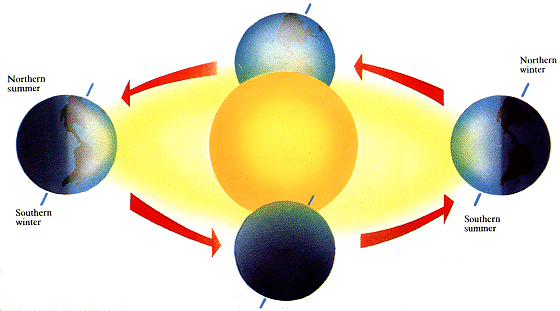Friday, April 18, 2014
The New Natural
So lets take a look at the earth we know and love so much. Though the big, beautiful blue planet may look perfect doesn't mean it is. Our planet is actually at a tilt, 23.4 degrees to be exact. This helps us out because this seemingly small tilt is responsible for the inspiration of Vivaldi's "Four Seasons" our seasons of course. Everyone knows that climate change is natural. The earth's positioning from the sun determines the weather we experience. Climate will be controlled by these external forcings until the end of time. We can even predict an ice age occurring in the next 40,000 years. This may make a lot of people ask why we should act so quickly when we are dealing with an occurrence so natural and out of our control as the weather seen here.
The changes described above can be defined as noise. They are problematic processes that occur over time but are adaptable and gradual. When humans introduce anthropogenic, or human made, emissions into the atmosphere they get trapped in the atmosphere, which can be bad. This process, known as the greenhouse effect, is not something inherently bad. Our atmosphere helps us out by trapping long form waves like heat in order to insulate the atmosphere and keep us from going into that ice age early. As a natural result the earth gets warming, which sounds natural enough right?
The problem in today's climate is something unnatural called global disruption. It is an upset to the natural order of things due to our habits speeding a process that would normally be sustainable into a worldwide issue that we must correct. We are able to tell from gases trapped in ice cores that our carbon emissions have never been this high in the last 800,000 years. This escalation can be seen in the chart below.
The map measure the rise of carbon dioxide from 1978-2006. As you can see there are variations in the rise of this gas but the overall trend goes upward. We would be very unfortunate if the earth wasn't covered in 70% of our own personal, greenhouse stabilizer.
Water from our oceans soak up a large amount of heat trapped within our atmosphere. Water heats faster than land but cools down faster as well. Unfortunately, they can't keep it up forever. This cyclical trapping of heat is known as feedback. Positive feedback relates to this heat trapping process where ocean water particles continue to trap heat, sending it back into the clouds and down into the earth. Despite it's name, this is a process that is actually problematic because it we don't need our oceans heating up anymore. This change might be hard to notice for most. For example, the world has only risen 1.2 degrees on average but the Arctic has warmed 4 degrees. This only intensifies the effect of the feedback. Remember those trapped gas bubbles in ice cores that I told you about earlier? Well when they melt (and in theory they're never supposed to) this release methane into the air and contribute the global disruption effect.
It is important to end on that phrase. Disruption refers to the fact that the habits of our society are speeding up natural processes to the point to where we are interfering with our capacity to predict a stable future. It is a fact and is less sticky than the generalities and misunderstandings associated with global warming. Pass on the term and pass on responsibility.
Subscribe to:
Post Comments (Atom)




Charity, I liked your explanation of Earth's natural climate change in relation to the Sun. It's important people understand this natural process so they gain perspective on why/how human-influenced climate change is different.
ReplyDeleteSee ya in class tom!